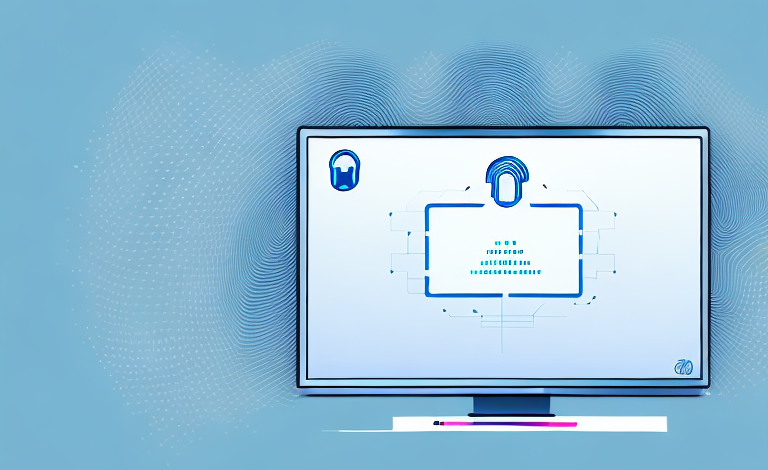Biometric authentication has become an increasingly popular form of security in recent years. Unlike traditional authentication methods such as passwords and PINs, biometrics use unique physical features or behavioral traits to verify a user’s identity. This approach offers several advantages, including increased security and convenience. However, many people wonder if biometric authentication is truly secure. In this article, we’ll explore why biometrics are hard to hack and what makes them an attractive option for securing sensitive information.
The fundamentals of biometric authentication
Before we delve into the security of biometrics, let’s first review the basics of this technology. Biometric authentication relies on unique physical characteristics, such as fingerprints, iris patterns, and facial features, or behavioral traits like voice patterns and typing rhythms, to identify a user. To use this type of authentication, a user typically needs to provide a sample of the biometric feature by scanning a fingerprint, looking into a camera, or speaking into a microphone. The system then compares the sample against a previously stored template and grants access if there’s a match.
One of the advantages of biometric authentication is that it is difficult to replicate or forge. Unlike passwords or PINs, which can be easily guessed or stolen, biometric features are unique to each individual and cannot be easily replicated. This makes biometric authentication a more secure option for protecting sensitive information and data.
However, there are also some concerns about the privacy implications of biometric authentication. Storing biometric data in a central database raises questions about who has access to this information and how it is being used. Additionally, there is a risk that biometric data could be stolen or hacked, potentially leading to identity theft or other forms of fraud.
History of biometric authentication and its evolution
While biometric authentication has gained popularity in recent years, it’s not a new technology. In fact, the ancient Chinese used fingerprints to sign legal documents as far back as 700 AD. The first modern-day biometric system was introduced in the 19th century and used handprints to identify prison inmates. Over time, biometric technology has evolved to include a wide range of physical and behavioral traits, and has become an increasingly popular form of authentication in various industries.
One of the major advantages of biometric authentication is its high level of security. Unlike traditional authentication methods such as passwords or PINs, biometric traits are unique to each individual and cannot be easily replicated or stolen. Additionally, biometric authentication can also improve convenience and efficiency, as users no longer need to remember complex passwords or carry physical tokens. As technology continues to advance, it’s likely that biometric authentication will become even more widespread and integrated into our daily lives.
The critical role of biometrics in cybersecurity
As cyberattacks become more sophisticated, traditional authentication methods like passwords and PINs have become less secure. Hackers can often obtain these credentials through various means, such as phishing scams or simply guessing weak passwords. Biometric authentication offers a more secure alternative that’s harder to crack. For example, while a hacker might be able to steal a password or guess a PIN, they can’t easily replicate a user’s unique physical features or behavioral traits.
Biometric authentication is becoming increasingly popular in various industries, including finance, healthcare, and government. In the finance industry, biometrics are being used to secure online banking transactions and prevent fraud. In healthcare, biometric authentication is being used to protect patient data and ensure that only authorized personnel have access to sensitive medical records. In government, biometrics are being used for border control and national security purposes.
However, biometric authentication is not foolproof and has its own set of challenges. One of the biggest challenges is privacy concerns. Biometric data is highly personal and sensitive, and there is a risk of it being misused or stolen. Another challenge is the cost of implementing biometric authentication systems, which can be expensive and require significant resources. Despite these challenges, biometric authentication remains a critical tool in the fight against cybercrime and is expected to become even more prevalent in the future.
Different types of biometric authentication methods
There are various types of biometric authentication methods, each with its own unique strengths and weaknesses. Some of the most common methods include:
- Fingerprint recognition
- Facial recognition
- Iris recognition
- Voice recognition
- Signature recognition
- Behavioral biometrics
Each of these biometric authentication methods has its own set of advantages and disadvantages. Fingerprint recognition is one of the most widely used methods due to its high accuracy and ease of use. Facial recognition is also gaining popularity, especially in security systems that require quick identification. Iris recognition is considered one of the most secure methods, as it is difficult to replicate or forge. Voice recognition is often used in phone-based authentication systems, but it can be less reliable in noisy environments. Signature recognition is commonly used in financial institutions, but it can be vulnerable to forgery. Behavioral biometrics, such as keystroke dynamics and mouse movements, are becoming more popular due to their ability to continuously authenticate users without requiring any additional action.
Pros and cons of using biometrics for authentication
As with any technology, using biometrics for authentication has its pros and cons. Some of the key advantages of biometrics include:
- Increased security
- Convenience
- Ability to reduce fraud and identity theft
- Improved user experience
However, there are also some potential downsides to consider, such as:
- Cost of implementation
- Privacy concerns
- Possible biases in the technology
- Risk of false positives and false negatives
One of the major benefits of biometrics is that it provides a high level of accuracy in identifying individuals. This is because biometric data, such as fingerprints or facial recognition, is unique to each person and cannot be easily replicated. Additionally, biometric authentication can be faster and more efficient than traditional methods, such as passwords or PINs.
On the other hand, there are also some potential risks associated with biometric authentication. For example, if biometric data is compromised, it cannot be changed like a password can. This means that if someone gains access to your biometric data, they could potentially use it to impersonate you for the rest of your life. Additionally, there are concerns about the collection and storage of biometric data, as it could be used for surveillance or other nefarious purposes.
How do hackers attempt to break into biometric systems?
While biometric authentication is harder to crack than traditional methods, it’s not foolproof. Hackers have developed several techniques to try and bypass these systems, including:
- Creating spoof biometrics (e.g., using a high-quality image of someone’s face to fool facial recognition technology)
- Stealing or modifying biometric data
- Intercepting biometric data during transmission
- Exploiting vulnerabilities in the system’s software
Despite these risks, biometric authentication is still considered much more secure than traditional methods, especially when used in combination with other security measures.
One of the most concerning methods used by hackers to break into biometric systems is the creation of deepfakes. Deepfakes are realistic videos or images that have been manipulated to show someone doing or saying something they never actually did. Hackers can use deepfakes to create spoof biometrics that are almost impossible to detect, making it easier for them to bypass biometric authentication systems. As deepfake technology continues to improve, it’s becoming increasingly important for biometric systems to have additional layers of security to prevent these types of attacks.
The impact of data breaches on biometric authentication
One concern with biometric authentication is that if a hacker gains access to a database of biometric data, they would have a far more severe security breach than if they had only obtained passwords. Unlike passwords, which can be changed, biometric data is permanent, making it more valuable to hackers. However, this risk can be mitigated by encrypting biometric data and following other best practices to protect sensitive information.
Another potential issue with biometric authentication is the possibility of false positives or false negatives. False positives occur when the system incorrectly identifies someone as an authorized user, while false negatives occur when the system fails to recognize an authorized user. This can be caused by a variety of factors, such as changes in physical appearance or environmental conditions. To minimize the risk of false positives and false negatives, biometric systems must be regularly calibrated and updated.
Despite these concerns, biometric authentication remains a promising technology for enhancing security and convenience. Biometric authentication can provide a higher level of security than traditional password-based systems, while also reducing the need for users to remember and manage multiple passwords. As biometric technology continues to evolve and improve, it is likely that we will see more widespread adoption of biometric authentication in various industries and applications.
Mitigating the risks associated with biometric authentication
To maximize the security of biometric authentication, it’s important to follow best practices such as:
- Ensuring that biometric data is encrypted
- Limiting the number of people who have access to biometric data
- Regularly updating software and systems
- Performing regular security audits
Advancements in biometric technology and their impact on security
As biometric technology continues to evolve, it’s likely that we’ll see even more secure and reliable forms of authentication become available. For example, some companies are researching new biometric methods such as DNA sequencing or analyzing users’ heartbeats. However, it’s also important to remain aware of possible risks associated with new technologies and to continue to prioritize security measures.
Best practices for securing biometric data
Some additional best practices for securing biometric data include:
- Deleting biometric data when it’s no longer needed
- Using two-factor authentication in conjunction with biometrics
- Conducting regular risk assessments of biometric systems
- Storing biometric data locally rather than in the cloud
The future of biometric authentication and its potential impact on society
As biometric authentication becomes more prevalent, we’re likely to see its impact on society in a variety of ways. For example, it could change the way we interact with technology, making it faster and more convenient to access various services. However, it could also lead to privacy concerns and potential biases, as well as further exacerbating issues around identity theft and fraud. It will be essential to address these concerns proactively as biometric authentication continues to gain popularity.
Challenges faced by organizations in implementing biometric authentication
While biometric authentication offers many benefits, it also poses several challenges for organizations. These can include:
- The need to invest in new technology and infrastructure
- Getting buy-in from stakeholders who may be skeptical of new technologies
- Ensuring that the technology is compatible with existing systems
- Addressing potential privacy and security concerns
Regulatory landscape surrounding the use of biometrics for identification and verification purposes
As with any new technology, regulatory bodies are becoming increasingly involved in governing the use of biometric authentication. For example, in the U.S., the National Institute of Standards and Technology (NIST) has developed guidelines for biometric authentication, while the General Data Protection Regulation (GDPR) in the European Union includes provisions for biometric data protection. It’s important for organizations to stay up-to-date with relevant regulations and ensure that they’re in compliance.
Case studies highlighting successful implementation of biometric authentication in various industries
Numerous industries have successfully implemented biometric authentication to improve security and convenience. Some examples include:
- Financial institutions using voice recognition to verify customers’ identity
- Airports using facial recognition to streamline the check-in process
- Retailers using fingerprint recognition for loyalty program access
- Healthcare providers using iris recognition to secure patient records
These case studies demonstrate how biometric authentication can offer a range of benefits when implemented correctly.
Conclusion
Overall, biometric authentication offers a more secure and convenient option for authenticating users compared to traditional methods like passwords and PINs. While not foolproof, biometrics are much more difficult to hack, and advancements in biometric technology are likely to continue improving security measures. However, it’s important to be aware of the potential risks and challenges associated with biometric authentication and to follow best practices to protect sensitive information.



